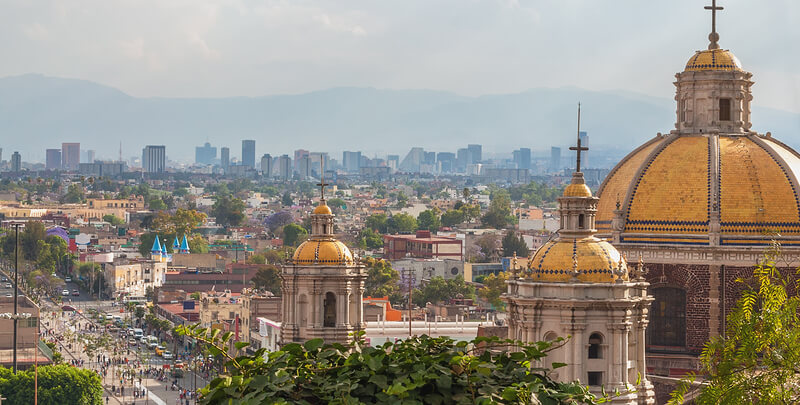How to open a Virgin Money Australia account. The steps, fees and requirements.
Looking for how to open a bank account with Virgin Money in Australia? We’ve got you covered. Here’s the process, fees and what you need to know.

If you’re considering a move to Mexico, there's a lot to think about beyond where to find the best pico de gallo.
If you want to open a local bank account, you’ll find a wide range of institutions, services and fees. There will be options no matter your needs, from checking and savings to money market accounts and certificates of deposit.
Here’s what you need to know to get the most from your pesos.
To get your account started, you will likely be asked for the following documents:
To activate your account, you’ll generally need to make a minimum deposit of at least 750 pesos, if not more. It’s good to note that while large cash deposits may be taxed, bank transfers and checks are not. This is one common practice to which you may not be accustomed - all bank charges, aperture fees, commissions and credit interest are subject to sales tax in Mexico.
The banking industry in Mexico is primarily dominated by foreign banks. As such, several international banks have a presence or a partner in Mexico – Bank of America, HSBC and Santander, for example. If you already bank with one of these institutions, they can help you with the specifics of setting up an account in Mexico before you arrive.
The procedure and availability of services may vary from bank to bank, so it’s best to speak to a customer representative at your local branch.
All principal Mexican banks do offer online banking. However, you may be required to open an account at your local retail branch before you can access your account’s online services. Most major bills can be paid online, and queues in banks are notoriously long, so be sure to register for online banking as soon as possible.
You don’t need to have a credit history if you have the required documentation. Mexican banks are not as strict as some countries when it comes to opening an account. However, if you won’t be receiving a salary and will only be in the country for a limited time, consider sticking with your account from home for the duration of your stay, and use ATMs to withdraw cash as needed.
Some banks will provide English language translations of contracts, but the official version will always be in Spanish. If you’re entering into a credit agreement, make sure you understand the terms offered, and know that only the Spanish contract is backed by the law in the event of a dispute.
Consider these major banks in Mexico that offer a variety of competitive services:
BBVA Bancomer
Banamex
Banorte
HSBC
Santander
BBVA Bancomer is Mexico’s largest bank. It operates through 1,800 branches, 7,700 ATMs, and 12,000 POS terminals.
They offer a variety of debit accounts with or without a checkbook, as well as a credit card.
The basic payroll account allows you to close or cancel your account free of charge. The minimum balance to avoid automatic account cancellation is 1,000 pesos.
The Maestra Particulares is a personal checking account a la vista (more on this below), which requires an opening deposit of 3,000 pesos. The account requires a minimum monthly balance of 8,000 pesos. It comes with an international card that can be used in Mexico and abroad.
You can also apply for business and corporate accounts, which provide international trade, financing, and investment services, as well as promotions and special discounts.
Mexico’s second-largest banking group, Banamex, is a Citigroup subsidiary. Banamex offers an array of basic payroll accounts, credit cards, checking and non-checking debit accounts.
If you are between the ages of 12 and 23, Banamex provides a basic account. An initial deposit of 500 pesos is required. If you maintain the 500 pesos balance in your account, you do not have to pay an account management fee.
Also for students, Banamex offers the BSmart U card credit card. No proof of income or credit history is required, and there is no annual fee for the first year when applying online. The card offers discounts at certain stores, and cardholders can accumulate points.
Banorte is one of the top five largest banks in Mexico, and is among the most populous in terms of ATMs and local branches. Banorte has 1,269 branches and 7,297 ATMs throughout Mexico. It can receive deposits in more than 5,200 commercial establishments, like supermarkets, drug stores and convenience stores.
Like most of the major banks, Banorte offers payroll accounts, credit cards, checking and non-checking debit accounts. Banorte ATMs allow a maximum withdrawal of 7,000 pesos per day. Their payroll account requires a minimum balance of 3,000 pesos.
Note that Capital One’s 360 debit card has no fees, and allows free withdrawals at Banorte ATMs of up to 3,000 pesos per day.
At HSBC Mexico, you can open a personal or business internet banking account. You will also have access to checking, debit, and credit accounts. They have 1,400 branches and 5,200 ATMs across Mexico.
A flex debit account costs 250 pesos, plus Value-Added Tax. You will not incur penalties if your account balance remains above 3,500 pesos. You can also obtain a chip and pin card, with a maximum withdrawal of 2,000 pesos daily.
If you’re a Bank of America customer already, keep an eye out for Santander banks, as Bank of America partners with all Santander ATMs across Mexico. They will assess an international transaction fee of 3 percent of the converted US dollar amount when you withdraw cash.
The UniSantander-K credit card is one option you may want to consider if you’re a student. The card charges no annual fee, as long as it is used once per month. Access the rewards program at no cost to get discounts on airline tickets, vacation packages and other items. You can obtain this card if you are between the ages of 20 and 70 years old, as long as you have a minimum income of 7,500 pesos per annum.
If you do decide to open an account, note that all Mexican banks must offer a basic account, known as a cuenta de nómina, or payroll account. These accounts are intended for wage recipients, and they do not charge fees or commissions. Account holders are provided with ATM cards.
In addition, every retail bank offers a checking account. These often require a minimum deposit to be made each month, and have a limited number of free ATM withdrawals per month. Afterwards, they charge a commission, based on the amount withdrawn.
Deposit accounts where the money is taken out ‘on sight’ (a la vista) are usually accompanied by a debit card for use in ATMs. These accounts have a fee, and require a minimum balance to maintain the account. If the balance goes below the minimum, a fee is applied each month until the balance is restored to the minimum. These accounts pay a small rate of interest.
Withdrawing money from an ATM is free of charge if you’re using your own bank’s ATM machine. Otherwise, rates vary depending on individual rules and regulations. For example, for non-partner ATMs, Bank of America charges a five-dollar usage fee for each withdrawal, transfer or balance inquiry, as well as the ATM operator access fee.
Most banks have premium accounts that offer additional benefits, like cash back services, interest payments and insurance. These accounts generally have monthly fees and eligibility requirements, and you may not qualify if you’re new to Mexico or want to set up only a short-term account.
One thing to watch out for, if you're sending money internationally, is fees hidden into poor exchange rates. Before you send your money abroad make sure to check an online currency converter to see the actual value of your cash, and check it against the sum your bank or the transfer service is offering you.
Better yet, if you now have a Mexican bank account use Wise to receive your money in Mexico. Not only does Wise offer the actual mid-market currency exchange rates for your money, but since they do all transfers locally it cuts out further international transfer fees, saving you even more.
*Please see terms of use and product availability for your region or visit Wise fees and pricing for the most up to date pricing and fee information.
This publication is provided for general information purposes and does not constitute legal, tax or other professional advice from Wise Payments Limited or its subsidiaries and its affiliates, and it is not intended as a substitute for obtaining advice from a financial advisor or any other professional.
We make no representations, warranties or guarantees, whether expressed or implied, that the content in the publication is accurate, complete or up to date.

Looking for how to open a bank account with Virgin Money in Australia? We’ve got you covered. Here’s the process, fees and what you need to know.

Learn how to close your Revolut Australia account. The steps, options and important need-to-knows before your begin.

If you’re a student juggling study alongside work and social commitments, ensuring you have reliable and easy access to your money is essential. Choosing a...

Coming into student life something you might not think to address straight away is your banking. Many Australian banks offer accounts designed for students,...

Depending on the bank, student bank accounts might have extra features or slightly better conditions for those studying, when compared to a standard account....

Here’s how to close your ME Bank account and options to move your money out correctly